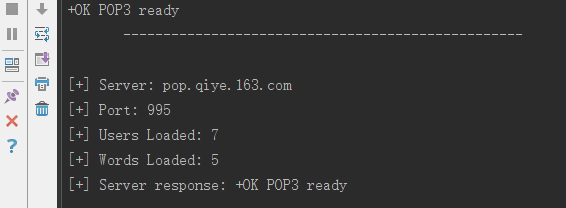Python中字符串格式化str.format的详细介绍
前言
Python 在 2.6 版本中新加了一个字符串格式化方法: str.format() 。它的基本语法是通过 {} 和 : 来代替以前的 %.。
格式化时的占位符语法:
replacement_field ::= "{" [field_name] ["!" conversion] [":" format_spec] "}"
“映射”规则
通过位置
str.format() 可以接受不限个参数,位置可以不按顺序:
>>> "{0} {1}".format("hello", "world")
'hello world'
>>> "{} {}".format("hello", "world")
'hello world'
>>> "{1} {0} {1}".format("hello", "world")
'world hello world'
通过关键字参数
使用关键参数时字符串中需要提供参数名:
>>> "I am {name}, age is {age}".format(name="huoty", age=18)
'I am huoty, age is 18'
>>> user = {"name": "huoty", "age": 18}
>>> "I am {name}, age is {age}".format(**user)
'I am huoty, age is 18'
通过对象属性
str.format() 可以直接读取用户属性:
>>> class User(object):
... def __init__(self, name, age):
... self.name = name
... self.age = age
...
... def __str__(self):
... return "{self.name}({self.age})".format(self=self)
...
... def __repr__(self):
... return self.__str__()
...
...
>>> user = User("huoty", 18)
>>> user
huoty(18)
>>> "I am {user.name}, age is {user.age}".format(user=user)
'I am huoty, age is 18'
通过下标
在需要格式化的字符串内部可以通过下标来访问元素:
>>> names, ages = ["huoty", "esenich", "anan"], [18, 16, 8]
>>> "I am {0[0]}, age is {1[2]}".format(names, ages)
'I am huoty, age is 8'
>>> users = {"names": ["huoty", "esenich", "anan"], "ages": [18, 16, 8]}
>>> "I am {names[0]}, age is {ages[0]}".format(**users)
指定转化
可以指定字符串的转化类型:
conversion ::= "r" | "s" | "a"
其中 "!r" 对应 repr(); "!s" 对应 str(); "!a" 对应 ascii()。 示例:
>>> "repr() shows quotes: {!r}; str() doesn't: {!s}".format('test1', 'test2')
"repr() shows quotes: 'test1'; str() doesn't: test2"
格式限定符
填充与对齐
填充常跟对齐一起使用。^, <, > 分别是居中、左对齐、右对齐,后面带宽度, : 号后面带填充的字符,只能是一个字符,不指定则默认是用空格填充。
>>> "{:>8}".format("181716")
' 181716'
>>> "{:0>8}".format("181716")
'00181716'
>>> "{:->8}".format("181716")
'--181716'
>>> "{:-<8}".format("181716")
'181716--'
>>> "{:-^8}".format("181716")
'-181716-'
>>> "{:-<25}>".format("Here ")
'Here -------------------->'
浮点精度
用 f 表示浮点类型,并可以在其前边加上精度控制:
>>> "[ {:.2f} ]".format(321.33345)
'[ 321.33 ]'
>>> "[ {:.1f} ]".format(321.33345)
'[ 321.3 ]'
>>> "[ {:.4f} ]".format(321.33345)
'[ 321.3335 ]'
>>> "[ {:.4f} ]".format(321)
'[ 321.0000 ]'
还可以为浮点数指定符号,+ 表示在正数前显示 +,负数前显示 -; (空格)表示在正数前加空格,在幅负数前加 -;- 与什么都不加({:f})时一致:
>>> '{:+f}; {:+f}'.format(3.141592657, -3.141592657)
'+3.141593; -3.141593'
>>> '{: f}; {: f}'.format(3.141592657, -3.141592657)
' 3.141593; -3.141593'
>>> '{:f}; {:f}'.format(3.141592657, -3.141592657)
'3.141593; -3.141593'
>>> '{:-f}; {:-f}'.format(3.141592657, -3.141592657)
'3.141593; -3.141593'
>>> '{:+.4f}; {:+.4f}'.format(3.141592657, -3.141592657)
'+3.1416; -3.1416'
指定进制
>>> "int: {0:d}; hex: {0:x}; oct: {0:o}; bin: {0:b}".format(18)
'int: 18; hex: 12; oct: 22; bin: 10010'
>>> "int: {0:d}; hex: {0:#x}; oct: {0:#o}; bin: {0:#b}".format(18)
'int: 18; hex: 0x12; oct: 0o22; bin: 0b10010'
千位分隔符
可以使用 "," 来作为千位分隔符:
>>> '{:,}'.format(1234567890)
'1,234,567,890'
百分数显示
>>> "progress: {:.2%}".format(19.88/22)
'progress: 90.36%'
事实上,format 还支持更多的类型符号:
type ::= "b" | "c" | "d" | "e" | "E" | "f" | "F" | "g" | "G" | "n" | "o" | "s" | "x" | "X" | "%"
其他技巧
占位符嵌套
某些时候占位符嵌套还是很有用的:
>>> '{0:{fill}{align}16}'.format("hello", fill='*', align='^')
'*****hello******'
>>>
>>> for num in range(5,12):
... for base in "dXob":
... print("{0:{width}{base}}".format(num, base=base, width=5), end=' ')
... print()
...
...
5 5 5 101
6 6 6 110
7 7 7 111
8 8 10 1000
9 9 11 1001
10 A 12 1010
11 B 13 1011
作为函数使用
可以先不指定格式化参数,而是在不要的地方作为函数来调用:
>>> email_f = "Your email address was {email}".format
>>> print(email_f(email="suodhuoty@gmail.com"))
Your email address was sudohuoty@gmail.com
转义大括号
当在字符串中需要使用大括号时可以用大括号转义:
>>> " The {} set is often represented as { {0} } ".format("empty")
' The empty set is often represented as {0} '
总结
以上就是这篇文章的全部内容了,希望本文的内容对大家的学习或者工作能带来一定的帮助,如果有疑问大家可以留言交流,谢谢大家对【听图阁-专注于Python设计】的支持。


